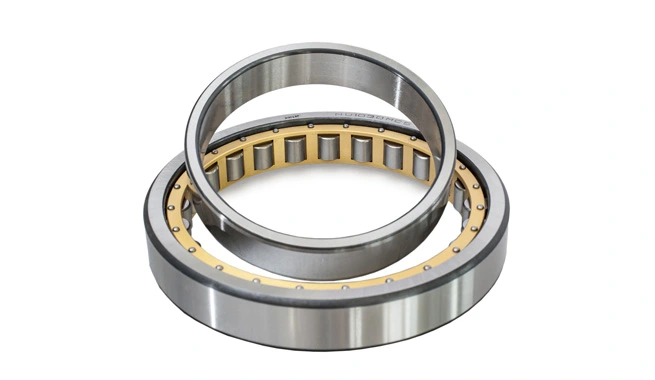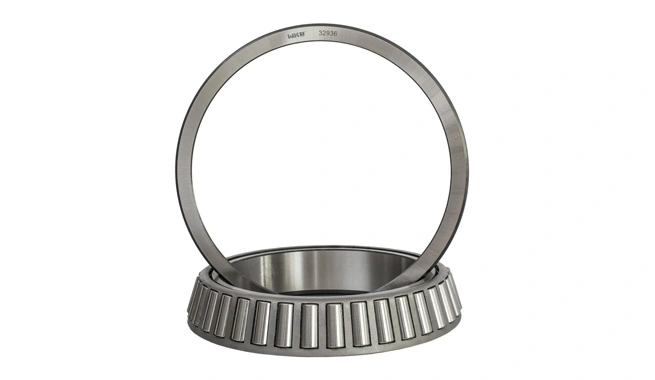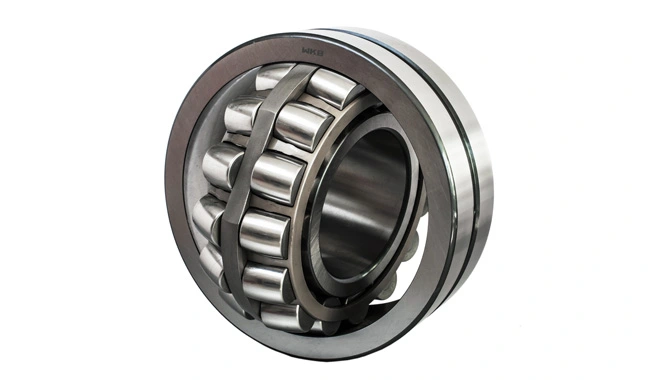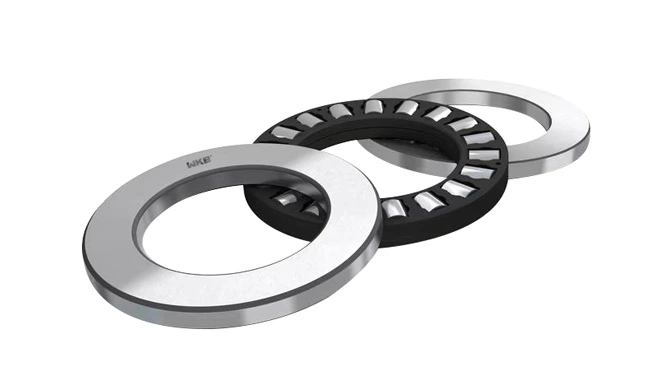Roller bearings are essential components in countless machines and systems, enabling smooth operation under demanding conditions. This guide explores what roller bearings are, their various types, their applications across industries, and how they differ from ball bearings. Whether you're an engineer, technician, or enthusiast, understanding roller bearings can help you select the right component for your needs.
Roller bearings are mechanical devices designed to reduce friction between rotating or moving parts while supporting both radial (perpendicular to the shaft) and axial (parallel to the shaft) loads. Unlike ball bearings, which rely on spherical balls, roller bearings use cylindrical, tapered, or needle-shaped rollers. This design provides a larger contact surface area, allowing roller bearings to handle heavier loads with greater stability.
The basic structure of a roller bearing includes an inner ring (race), an outer ring, rollers, and often a cage to keep the rollers evenly spaced. By distributing loads across the rollers, these bearings minimize wear and enhance efficiency in applications ranging from automotive systems to heavy industrial machinery.
Roller bearings come in several designs, each tailored to specific load capacities, speeds, and environmental conditions. Below are the primary types:
Cylindrical Roller Bearings: These feature cylindrical rollers that provide high radial load capacity and moderate axial load support. They are ideal for high-speed applications, such as electric motors, gearboxes, and machine tool spindles, due to their low friction and durability.

Tapered Roller Bearings: With conical rollers and raceways, these bearings excel at handling combined radial and axial loads. They are widely used in automotive wheel hubs, heavy machinery, and railway axles, where precise load distribution is critical.

Spherical Roller Bearings: These have barrel-shaped rollers that accommodate misalignment and heavy loads, making them suitable for applications with shaft deflection or vibration, such as conveyor systems, mining equipment, and paper mills.

Needle Roller Bearings: Featuring thin, elongated rollers, needle bearings offer high radial load capacity in compact spaces. They are commonly found in automotive transmissions, pumps, and small appliances where space is limited.
Thrust Roller Bearings: Designed specifically for axial loads, these bearings are used in applications like crane hooks, extruders, and marine propulsion systems, where high axial force is present.

Each type is engineered for specific performance characteristics, so understanding the application’s requirements is key to choosing the right bearing.
Roller bearings are integral to a wide range of industries, ensuring reliability and efficiency in demanding environments. Here’s a look at their key applications:
Automotive: Roller bearings are critical in vehicle components like wheel hubs, transmissions, and differentials. Tapered roller bearings, for instance, support the heavy loads and dynamic forces in car and truck axles.
Industrial Machinery: From conveyor belts to compressors, roller bearings enable smooth operation in manufacturing and processing equipment. Spherical roller bearings are often used in vibrating machinery to handle misalignment.
Aerospace: In jet engines, landing gear, and control systems, roller bearings provide precision and durability under extreme temperatures and loads, ensuring safety and performance.
Construction: Heavy equipment like cranes, excavators, and bulldozers relies on roller bearings to manage high radial and axial loads during operation.
Energy: Wind turbines, hydroelectric generators, and other renewable energy systems use roller bearings to support rotating components, optimizing energy production.
When selecting a roller bearing for an application, consider factors such as load magnitude, rotational speed, operating temperature, and environmental conditions (e.g., dust or moisture). Proper lubrication and maintenance are also crucial to extending bearing life and preventing premature failure.
The primary distinction between ball and roller bearings lies in their contact geometry and load-handling capabilities. Ball bearings use spherical balls that create point contact with the raceways, resulting in lower friction and suitability for high-speed, low-to-moderate load applications, such as in electric fans or hard drives.
Roller bearings, by contrast, use rollers that provide line contact, distributing loads over a larger surface area. This makes them better equipped to handle heavy radial loads and moderate speeds, as seen in applications like conveyor systems or heavy machinery. While ball bearings excel in precision and speed, roller bearings are the go-to choice for durability under substantial loads.
Another difference is in their ability to handle axial loads. Tapered and thrust roller bearings are specifically designed for significant axial forces, whereas ball bearings typically require specialized designs (e.g., angular contact bearings) to manage axial loads effectively.
Roller bearings offer several benefits that make them indispensable in many applications:
· High Load Capacity: Their line contact design allows them to support heavier radial and axial loads compared to ball bearings.
· Durability: Roller bearings are robust and can withstand harsh conditions, including shock loads and vibrations.
· Versatility: With various types available, roller bearings can be tailored to diverse applications, from compact needle bearings to heavy-duty spherical bearings.
· Reduced Friction: Properly lubricated roller bearings minimize friction, improving energy efficiency and reducing wear.
Selecting the appropriate roller bearing involves evaluating several factors:
· Load Type and Magnitude: Determine whether the application involves radial, axial, or combined loads and their intensity.
· Speed Requirements: High-speed applications may favor cylindrical roller bearings, while heavy loads at lower speeds may require tapered or spherical types.
· Environmental Conditions: Consider exposure to dust, moisture, or extreme temperatures, and choose bearings with appropriate seals or coatings.
· Space Constraints: Needle roller bearings are ideal for compact designs, while larger applications may accommodate spherical or tapered bearings.
· Maintenance Needs: Assess whether the bearing will be maintenance-free (sealed) or require regular lubrication.
Consulting manufacturer specifications and industry standards can further ensure the bearing meets the application’s demands.
Roller bearings are vital components that enable efficient and reliable operation across industries, from automotive to aerospace. By understanding their types, applications, and differences from ball bearings, you can make informed decisions when selecting bearings for specific tasks. With their ability to handle heavy loads and diverse conditions, roller bearings continue to play a critical role in advancing technology and industry.